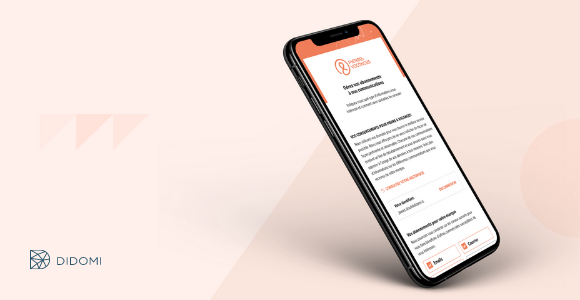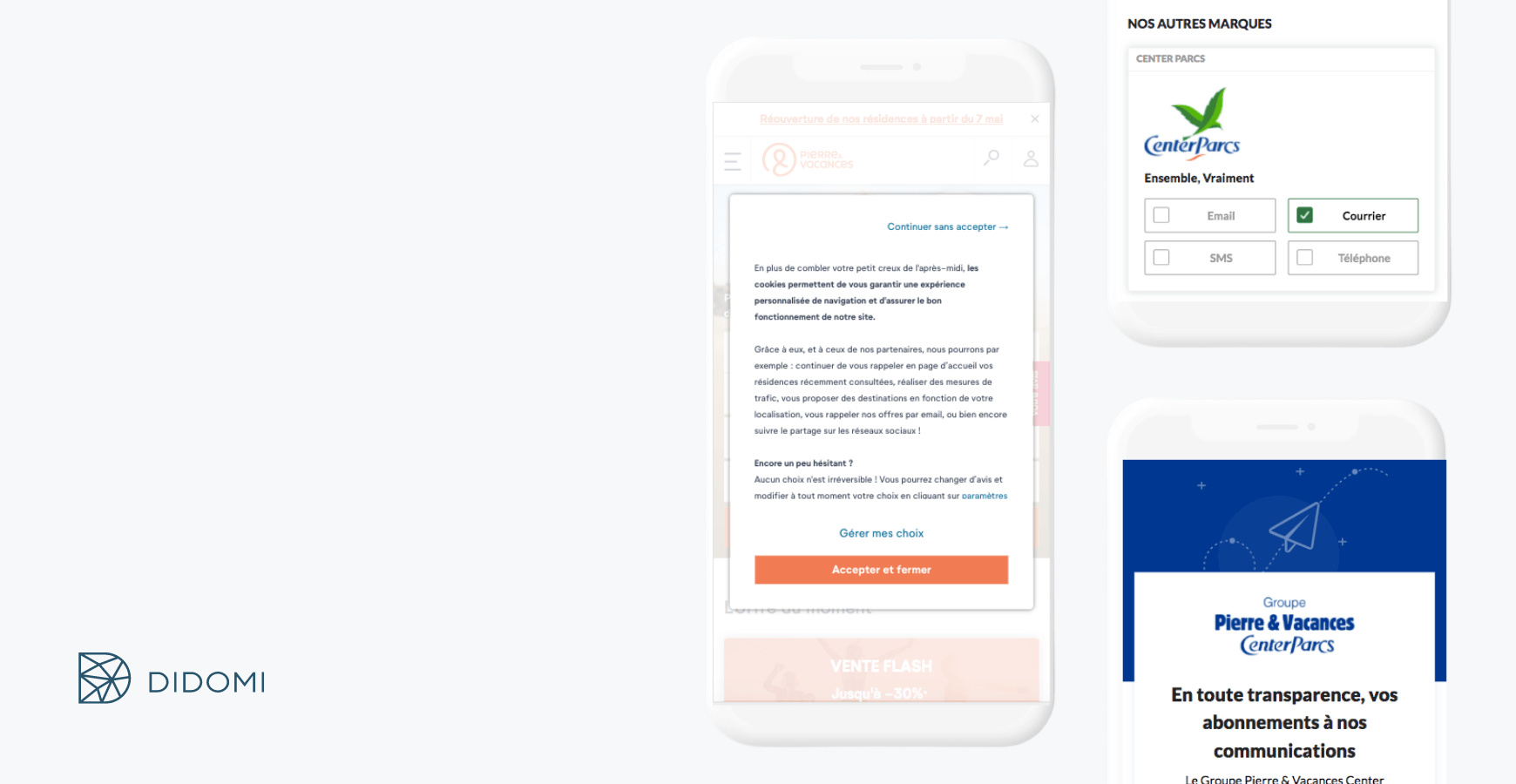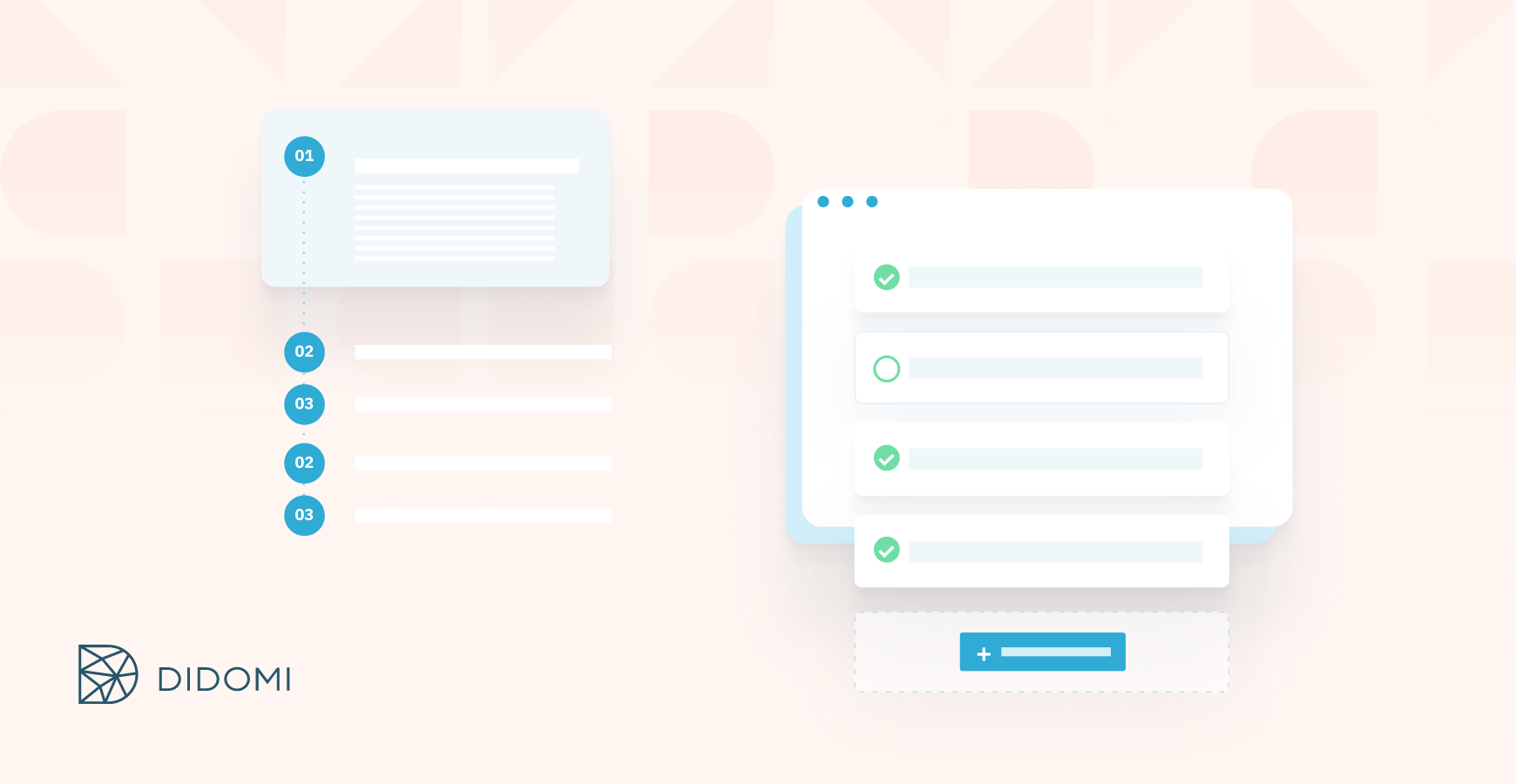The GDPR, the CNIL and the ePrivacy directive give back control to users over their personal data and make companies responsible for the collection and use of this data. It is now necessary to collect explicit consent from individuals to be in compliance.
But, don’t panic! Investing in a Preference Center allows you to turn legal constraints into a real marketing advantage: it is THE solution to collect user consent and to be in compliance with the law while promising them good content at the right frequency. It’s also an ideal space to enrich your database and create brand loyalty.
Summary
- What does a preference center do?
- A concrete example: Groupe Pierre & Vacances Center Parcs.
- What is the return on investment (ROI) for a Preference Center?
- How do I set up a Preference Center?
A look back on our webinar (in French) on this subject, of which you will find the full recording below:
What does a Preference Center do?
A Preference Center, or “preference management center”, is a space dedicated to the management of subscription settings. It allows you to centralise your customers’ consents and preferences, allowing them to choose precisely the data they wish to communicate to you, but also to indicate the frequency and consent of communications. Its added value? Improve the relevance and targeting of communications by meeting user expectations while providing an optimal experience.
|
Pierre & Vacances Center Parcs Group streamlines customer opt-in across multiple countries and languages. They generate user trust and revenue by providing a better preference management experience. Want to find out how they did it?
|
At Didomi, we believe that a Preference Center is a leading marketing tool that is still too neglected by companies because they don’t know how to do it. That’s why we give you the keys to know how to set it up and take advantage of it: let’s look at the 4 main uses of Preference Centers and their specificities.
Want to find out more about the benefits of a Didomi Preference Center?
1 – On websites
First, websites. A Preference Center enables you, via your websites, to efficiently collect cookie consents and preferences for your marketing and communication activity on the websites of your company and your partners, and to give your customers the possibility to change their preferences freely and autonomously via the Preference Center.
2 – On mobile apps
Mobile apps, on the other hand, provide access to geolocation and contact data. There is thus a lot of personal data stored on the mobile device where companies can offer their services. A Preference Center allows you to collect effective communication consents on your mobile applications, to collect consents and preferences for your marketing and communication activity on your company’s and partners’ apps, allowing your users to be within a click’s reach, wherever they are, of their preference management center so they can change their mind as they wish.
3 – When emailing
Via emailing, the Preference Center lets your customers control the communications and solicitations they receive themselves. Too often, users are dissatisfied with an uncontrolled and too intrusive communication policy. Offer your customers direct, pre-authenticated access to a Preference Center so they can change their email and contact preferences, and thus you collect new preferences for your marketing and communication activity.
4 – In a call center or in store
Finally, call centers and physical stores allow you to collect “delegated” consents, that is, the collection and validation of the collection of consent by another person. The call center operator, or the receptionist in the store, can modify your preferences at your request, and send you an email confirming that your choices have been taken into account. Double opt-in requires the user to acknowledge receipt of this email.
Take advantage of delegated consent to make your group known to your users, to attract new customers and to enrich your database with a more targeted clientele. Didomi helps you manage delegated consent workflows in a controlled and traceable way, in full compliance.
So, in concrete terms, what problems can a Preference Center solve?
We can answer with feedback from the hotel and tourism group Pierre & Vacances Center Parcs.
A concrete example: Pierre & Vacances Center Parcs Group.
How do you collect and manage user consents and preferences when you are as diverse and varied as Groupe Pierre & Vacances Center Parcs, with 5 consumer brands, in 7 target countries, and online and offline customers? Consents and preferences are critical for marketing and must be managed effectively.
Didomi provided solutions to all legal and marketing issues, including a multi-brand and multilingual preference center, taking into account customer choices in a perfectly transparent way, with delegated consent management for offline collection, updating of preferences, integration with the single customer repository and establishment of specific rules for taking consent into account.
By equipping itself with a Preference Center, the Pierre & Vacances Center Parc Group is taking a step into the future and positioning itself as a leader in marketing strategy. Gartner confirms this trend by predicting that by 2020, 30% of B2C companies will be equipped with a Preference Center.
This is an opportunity for you to show your users that you care about their choices by offering them the best possible experience. As the figures show, more transparency and choice leads to more “yes” than “no”. This is an opportunity to differentiate yourself from your competitors with a strong and positive brand image. It’s an opportunity to be in regulatory compliance, with a complete audit trail allowing access to consent at any time to demonstrate compliance and transparency to your customers.
All this has significant business consequences: a more targeted marketing approach leads to a higher conversion rate and more revenue, while respecting the law. Collecting more targeted data allows you to better understand customers’ expectations and to better satisfy them.
What is the return on investment (ROI) for a Preference Center?
Indeed, a Preference Center has an immediate impact on your business and brings you a considerable ROI. Managing consents and Preference Centers is critical for brands, because beyond compliance, it’s about your revenue. Failure to take this into account today is neglecting tomorrow’s revenue.
Let’s take the examples of re-marketing and emailing. In the first case, your ability to re-engage your user base by increasing the consent rate, even by just a few percent, increases the number of people who visit your site, and therefore the number of buyers, and ultimately the revenue generated on your site. By working on the re-marketing consent metric alone, you can generate up to a 50% increase in revenue.
Similarly, in the context of emailing, being able to minimise your customers’ rate of unsubscribing has considerable impacts in terms of turnover and ROI. By moving from a 5% to a 3% unsubscribing rate, you potentially increase your annual revenue by €6 million on an annual purchase basis of €300.
Thanks to the Preference Center, you don’t overburden your users and therefore don’t push them to unsubscribe. On the contrary, by allowing them to control when and how you can contact them, you minimise losses and maximise profits.
It’s time to integrate a Preference Center into your business strategy. It is by providing a satisfying, targeted and free customer experience that you will ensure you win more customers, and ROI.
How do I set up a Preference Center?
Convinced yet? Didomi can help you to set up a Preference Center in 4 steps:
-
Organization of a Consent and Preference Audit: analysis of consent needs, determination of desired preferences and contact points, detection of partners and necessary integrations.
-
Customise the Preference Center to your brand image, through the choice of message and the preference management paths.
-
Deployment of the Consent Management Platform (CMP) via the SDK and integration with existing solutions (CRM, emailing push notifications, Business intelligence).
-
Implementation of analytics and A/B testing to improve consent rates and monitor customer behavior.
Do you want to comply with GDPR in an optimal way? Provide simple and transparent access for your users, with the complete history of consent and preferences accessible in one click? Increase subscriptions and shopping carts? Fight against unsubscribing? Establish a trusting relationship with users? Have qualified leads? Enrich your database?
All of this is possible thanks to Didomi’s Preference Center, which accompanies you at all times with a dedicated Customer Success Manager at your service. We are convinced that this is the indispensable marketing tool of tomorrow. For a tailor-made Preference Center and advice on how to implement it, please do not hesitate to contact us!











